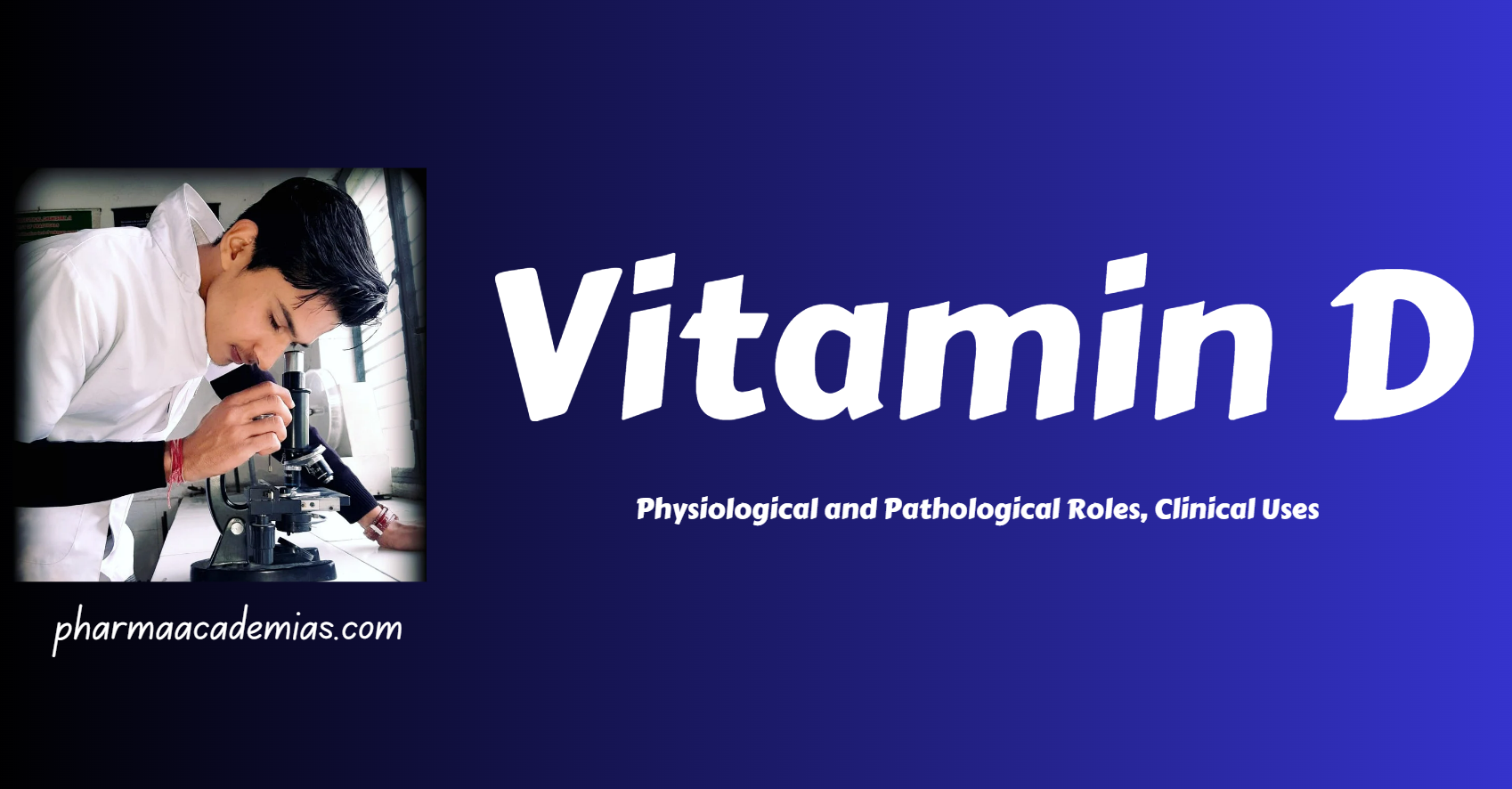Vitamin D is a vital fat-soluble nutrient for regulating calcium and phosphorus metabolism. It includes forms like D2 (from plant sources) and D3 (synthesized in the skin and found in animal-based foods). Its primary role is aiding the absorption of calcium and phosphorus in the intestines, which are vital for bone health. Obtained from diet, supplements, and sunlight, vitamin D deficiency can lead to health issues, highlighting the need for sufficient intake and sunlight exposure.
1. Physiology of Vitamin D
Sources:
Sun Exposure: Vitamin D can be synthesized in the skin upon exposure to ultraviolet B (UVB) sunlight.
Dietary Sources: Vitamin D is found in certain foods, including fatty fish, egg yolks, and fortified dairy products.
Activation:
Vitamin D undergoes a two-step activation process. First, it is converted to calcidiol in the liver and then to the active form, calcitriol, in the kidneys.
Function:
Calcium Absorption: Calcitriol enhances calcium absorption in the intestines, promoting adequate calcium levels in the bloodstream.
Bone Health: Vitamin D is essential for bone health as it regulates the deposition of calcium and phosphorus in the bones.
Control:
Parathyroid Hormone (PTH): Calcitriol synthesis is stimulated by PTH, which is released in response to low blood calcium levels.
2. Pathological Role of Vitamin D
Vitamin D Deficiency: Vitamin D is a crucial fat-soluble vitamin that plays a vital role in maintaining optimal health. One of its primary functions is regulating the absorption of calcium and phosphorus, essential for bone health. Vitamin D deficiency occurs when the body lacks an adequate amount of this vitamin, leading to various health issues.
Osteomalacia: Severe vitamin D deficiency can lead to osteomalacia, a condition characterized by weakened and softened bones.
Rickets: In children, vitamin D deficiency can cause rickets, a condition characterized by skeletal deformities.
Hypercalcemia: Excessive vitamin D supplementation can lead to elevated blood calcium levels, resulting in nausea, vomiting, and weakness.
3. Clinical Uses of Vitamin D
Treatment of Vitamin D Deficiency:
Supplementation: Healthcare providers prescribe vitamin D supplements to correct deficiencies and prevent related disorders such as osteomalacia and rickets.
Osteoporosis Management:
Calcium and Vitamin D Supplements: Healthcare providers often recommend vitamin D and calcium for individuals with osteoporosis to support bone health.
Chronic Kidney Disease:
Healthcare providers may use calcitriol supplementation to maintain calcium and phosphorus balance in individuals with impaired kidney function.
Parathyroid Disorders:
Secondary Hyperparathyroidism: Vitamin D analogs like calcitriol may manage secondary hyperparathyroidism in conditions like chronic kidney disease.
4. Considerations in Treatment
Monitoring:
Serum Vitamin D Levels: Regular monitoring of serum vitamin D levels is important to assess adequacy and adjust supplementation as needed.
Sun Exposure:
Balanced Exposure: To prevent skin damage and reduce the risk of skin cancer, individuals should avoid excessive sun exposure, although sunlight is a natural source of vitamin D.
Individualized Supplementation:
Dose Adjustment: Healthcare providers should individualize vitamin D supplementation based on age, health status, and sunlight exposure.
Vitamin D plays a crucial role in calcium homeostasis and bone health. Deficiency can lead to various disorders, while appropriate supplementation is essential for prevention and management. Clinical uses of vitamin D are diverse, ranging from treating deficiencies to supporting bone health in conditions like osteoporosis. Regular monitoring and individualized care are key considerations in the clinical use of vitamin D.

